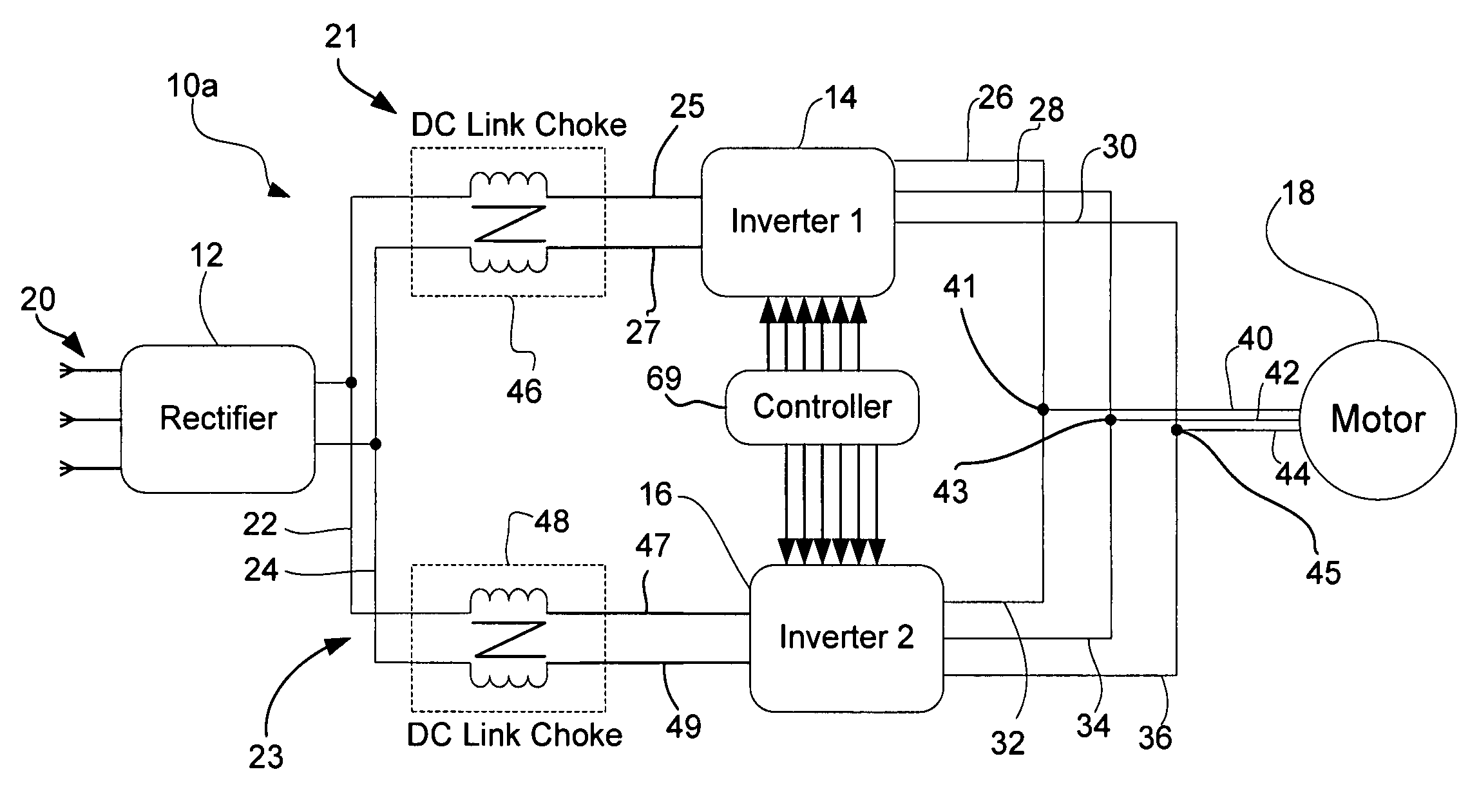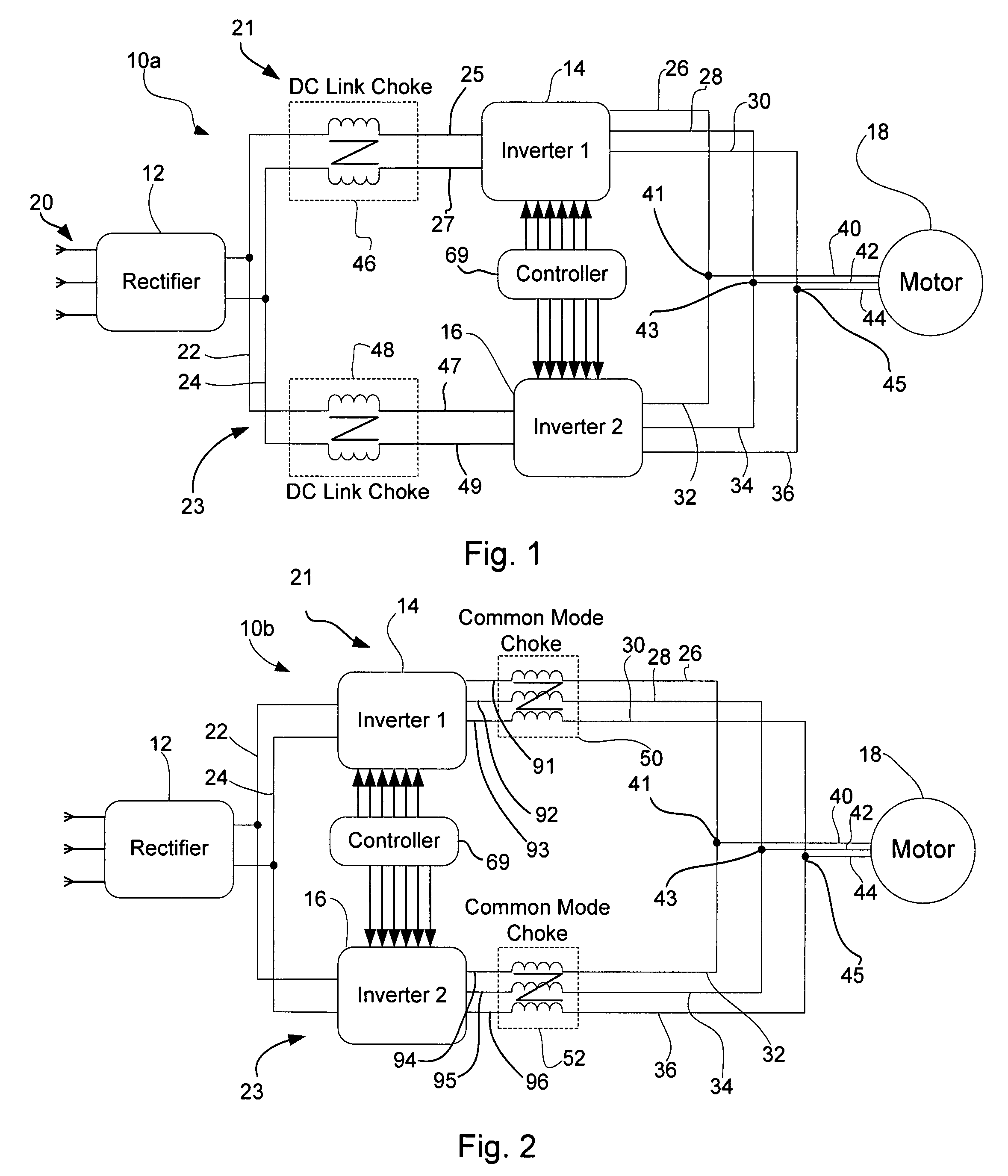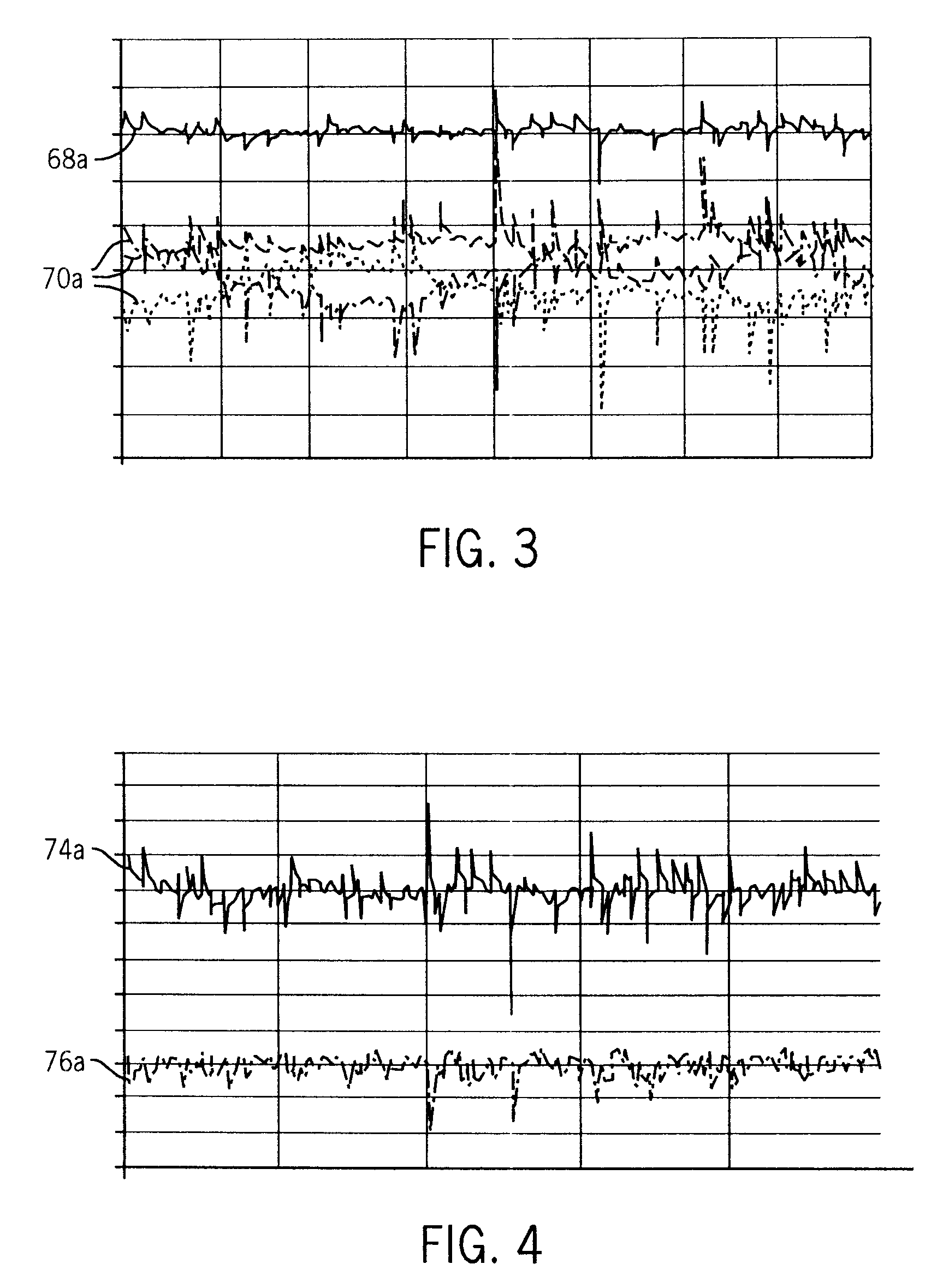Method and apparatus for synchronized parallel operation of PWM inverters with limited circulating current
- Summary
- Abstract
- Description
- Claims
- Application Information
AI Technical Summary
Benefits of technology
Problems solved by technology
Method used
Image
Examples
Embodiment Construction
[0032]Referring now to the drawings wherein like reference numerals correspond to similar elements throughout the several views and, more specifically, referring to FIG. 1, the present invention will be described in the context of an exemplary power conversion system 10a that receives power from three AC supply lines collectively identified by numeral 20 and provides three phase AC power to a motor 18 via first, second and third AC output lines 40, 42 and 44, respectively. As shown, system 10a includes a rectifier 12 and first and second parallel system legs 21 and 23. As well known, rectifier 12 receives three phase AC input voltages on supply lines 20 and converts those AC voltages to a DC potential across positive and negative DC rails or buses 22 and 24, respectively.
[0033]Referring still to FIG. 1, first system leg 21 includes a first DC line choke 46, a first three phase inverter 14 and cables 26, 28 and 30. First choke 46 is magnetically linked to positive and negative DC bus...
PUM
 Login to View More
Login to View More Abstract
Description
Claims
Application Information
 Login to View More
Login to View More - R&D
- Intellectual Property
- Life Sciences
- Materials
- Tech Scout
- Unparalleled Data Quality
- Higher Quality Content
- 60% Fewer Hallucinations
Browse by: Latest US Patents, China's latest patents, Technical Efficacy Thesaurus, Application Domain, Technology Topic, Popular Technical Reports.
© 2025 PatSnap. All rights reserved.Legal|Privacy policy|Modern Slavery Act Transparency Statement|Sitemap|About US| Contact US: help@patsnap.com



